Introduction to Fast Website Design and Its Necessity
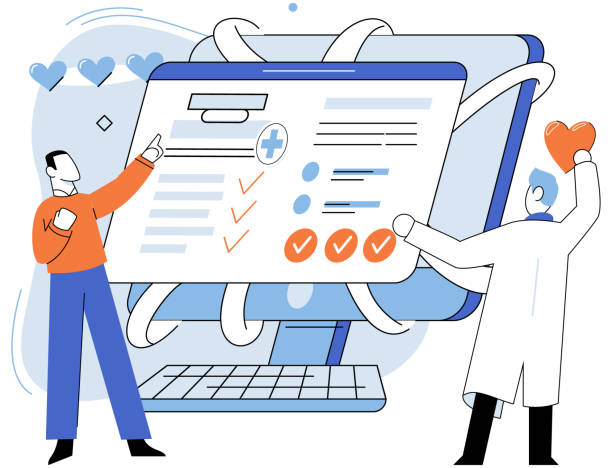
In today’s digital world, website speed is not just a competitive advantage, but a vital necessity.
When users are looking for information or services, fast website design can make the difference between a user staying on your site or leaving for a competitor.
Studies have shown that even a one-second delay in page loading can lead to a decrease in conversion rates and user dissatisfaction.
Therefore, investing in #website speed optimization and #high-speed website design is of great importance.
This is especially crucial for online businesses and e-commerce stores where every millisecond of delay can mean lost sales.
Understanding that today’s users are impatient and expect to receive information in the shortest possible time is the first step towards implementing a fast website design strategy.
This article will help you become familiar with various aspects of achieving #high loading speed and take practical steps to improve your website’s performance.
Are you concerned about your e-commerce site’s low conversion rate and not achieving your desired sales?
Rasaweb is your specialized solution for a successful e-commerce website.
✅ Significant increase in conversion rates and sales
✅ Professional and user-friendly design to attract customer satisfaction
⚡ Ready for a transformation in online sales? Get a free consultation!
Key Factors in Achieving Fast Website Design
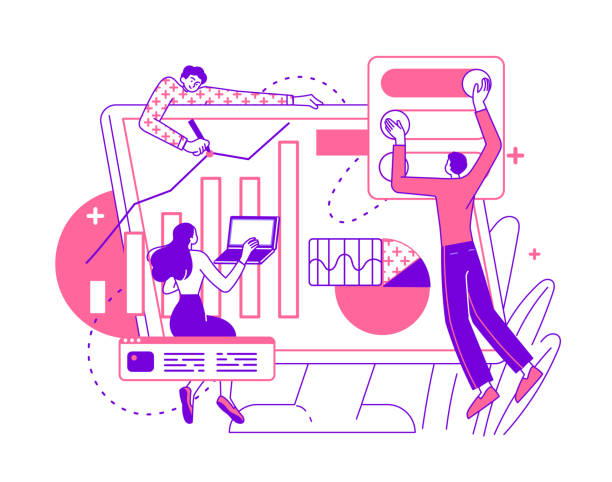
Achieving fast website design requires attention to several key factors, each of which affects the final loading speed.
One of the most important factors is the #overall size of page files.
The smaller the size of images, codes (HTML, CSS, JavaScript), and fonts, the faster the loading speed will be.
The next item is the #number of HTTP requests; the browser sends a separate HTTP request for each individual file (image, CSS file, JS file).
Reducing the number of these requests by combining files or using CSS Sprites techniques can significantly increase speed.
The quality of hosting also plays a vital role; a powerful and optimized hosting can minimize server response time.
Furthermore, using a #Content Delivery Network (CDN) to deliver files from the nearest server to the user is another effective method for optimally performing web design.
Do not forget that optimizing server-side code and databases is also very effective in the overall speed of the site.
Each factor alone can make a significant improvement, but it is the optimal combination of all of them that leads to a fast and unparalleled website design.
Optimizing Images and Media for Increased Speed

Images and media files are often the biggest culprits for slow websites.
To achieve fast website design, their precise optimization is essential.
The first step is #compressing images without significant quality loss.
Various online and offline tools exist that can drastically reduce image size.
File format also matters; use JPEG for photographs, PNG for low-detail graphics and logos, and WebP or SVG for animations, as they have smaller file sizes and offer higher quality.
The next point is #appropriate image dimensions; never upload an image larger than what is displayed on the site and don’t let the browser resize it, as this causes extra loading.
Also, using the #Lazy Loading feature for images and videos is highly effective.
With this technique, media files are only loaded when the user scrolls to the relevant section, which has a significant impact on initial loading speed, especially on long pages with a lot of content.
Below is a table of optimized image formats and their uses.
| Image Format | Best Use Case | Features |
|---|---|---|
| JPEG | Photographs, images with wide color range | Lossy compression, small file size |
| PNG | Logos, icons, images with transparency | Lossless compression, supports transparency |
| WebP | Optimized alternative to JPEG and PNG | Smaller file size with similar quality, supports transparency and animation |
| SVG | Charts, icons, vector logos | XML-based, scalable without quality loss, very small file size |
By following these tips, you can effectively help improve your website loading speed and provide a better user experience.
The Role of Hosting and CDN in Fast Site Performance

One of the most fundamental factors in achieving fast website design is the correct choice of #hosting and the use of a #Content Delivery Network (CDN).
Your hosting is essentially your website’s home; the stronger the server, the closer it is to the audience, and the more optimized its configuration, the lower the server response time (Time To First Byte – TTFB) will be, resulting in a faster loading site.
Shared hosting, although cheaper, may have slower speeds due to sharing resources with other websites.
Virtual Private Servers (VPS) or dedicated servers are better options for high-traffic websites or those that require fast website design.
But what is a CDN? A CDN is a network of servers distributed across various geographical locations.
When a user visits your website, the CDN delivers the static files of the site (such as images, CSS, JavaScript) from the server closest to that user.
This significantly reduces the #physical distance between the user and the server, thereby increasing loading speed.
For example, if your main server is in Germany and a user from Iran visits your site, without a CDN, files would have to be transferred from Germany to Iran.
But with a CDN, files are sent to the user from a CDN server in Iran or a country close to Iran.
This reduction in latency is crucial for achieving a high-speed website.
Choosing a suitable CDN and configuring it correctly is an essential step towards #optimizing site speed and providing a smooth user experience.
Tired of losing customers due to poor e-commerce website design? With Rasaweb, solve this problem forever!
✅ Increase sales and conversion rates from visitors to customers
✅ Smooth and attractive user experience for your customers⚡ Get a free consultation
Reducing HTTP Requests and Utilizing Caching

On the path to achieving fast website design, there are two fundamental techniques that significantly impact your website’s performance: #reducing HTTP requests and #optimal use of caching.
Every time your browser loads a web page, it must send a separate HTTP request to the server for each file (such as images, CSS files, JavaScript files, fonts, etc.).
The more requests there are, the longer the page loading time will be.
To reduce these requests, you can minify and concatenate CSS and JavaScript files where possible (Minification and Concatenation).
For example, instead of having multiple small CSS files, you can merge them into a larger single file.
Another technique is to use browser caching.
Once the browser downloads static files (like images or CSS files), it can store them in its cache memory.
This means that on subsequent visits to the same page or other pages on the same website, the browser will not need to re-download those files and will load them from its local cache.
This tremendously helps with the reload speed of pages and improves the user experience.
Implementing caching through HTTP headers and using caching plugins (in CMSs like WordPress) can facilitate the fast website design process and lead to an #optimally performing website.
The Impact of WordPress Themes and Plugins on Site Speed
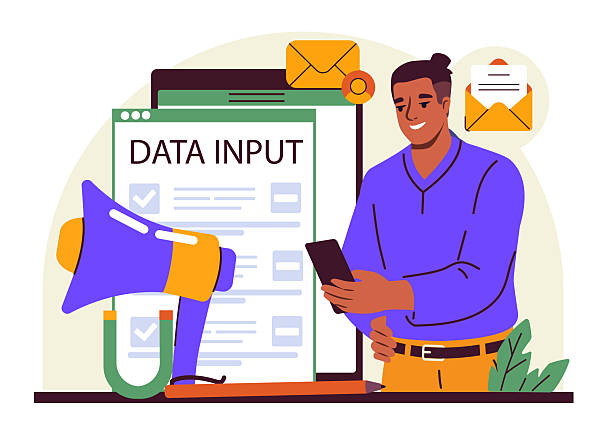
If your website is built on the #WordPress content management system, the importance of the themes and plugins you choose in achieving fast website design is amplified.
Many available themes and plugins, while offering attractive functionalities, can significantly slow down your site due to #poor coding, loading unnecessary files, or making excessive database requests.
A heavy theme full of unnecessary features can load hundreds of kilobytes of extra code and CSS/JS files, directly affecting #loading time.
Plugins can also cause similar problems.
Every new plugin you install likely adds new resources (such as codes, styles, scripts) to your site and may send background requests to the server or database.
Therefore, for fast website design, it is essential to use only lightweight and optimized themes and plugins.
Before installing any plugin, review user comments and ensure that its developer prioritizes site speed.
Also, delete unused plugins, don’t just deactivate them.
This regular cleanup helps #reduce resource consumption and directly moves you towards #high-speed website design.
Conscious selection and proper maintenance are key to maintaining the #fast performance of your WordPress website.
Website Speed Measurement and Performance Analysis Tools
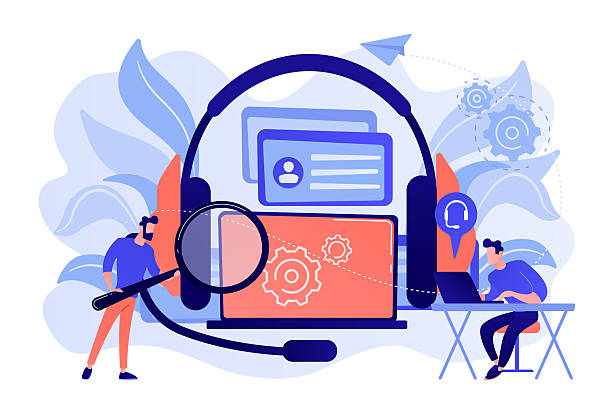
To ensure that your efforts towards fast website design have been successful, you need tools for accurate measurement and analysis of your website’s performance.
These tools help you identify speed bottlenecks and find suitable solutions for improvement.
One of the most well-known and widely used tools is #Google PageSpeed Insights.
Provided by Google, this tool not only gives a score for your site’s speed on mobile and desktop devices but also offers specific recommendations for performance improvement.
#GTmetrix and #Pingdom are also popular tools that provide more comprehensive information about loading time, number of requests, page size, and optimization recommendations.
Using these tools is not just about getting a high score; the main goal is to #identify technical issues and #implement practical solutions to resolve them.
For example, if PageSpeed Insights suggests compressing images, you should refer back to the relevant section (Chapter 3) and take the necessary actions.
The table below introduces and compares some of these key tools.
These tools are valuable resources for anyone seeking fast website design and long-term optimal performance.
Regular evaluation and adherence to recommendations are crucial steps in maintaining your website’s competitiveness in the online space.
| Tool Name | Key Features | Primary Use Case |
|---|---|---|
| Google PageSpeed Insights | Speed scoring (Mobile/Desktop), optimization suggestions based on Core Web Vitals | Google standards, SEO improvement |
| GTmetrix | Comprehensive report (Waterfall Chart), optimization suggestions from YSlow and PageSpeed | Deep performance analysis, precise bottleneck identification |
| Pingdom Tools | Loading time, page size, number of requests, heatmaps | Real-time monitoring, performance viewing from different geographical locations |
| WebPageTest | Tests from multiple locations and browsers, loading video, detailed reports | Advanced analysis for developers, real-world condition simulation |
By continuously using these tools, you can take effective steps towards fast website design and the success of your business.
Enhanced User Experience and Higher Conversion Rates with Fast Website Design

Perhaps the most important reason to invest in fast website design is its direct impact on #User Experience (UX) and ultimately on your website’s #Conversion Rate.
Today’s users are impatient; if your website loads slowly, even if you have very high-quality content, many of them will leave the site before viewing the content.
This phenomenon is known as “Bounce Rate,” and an increase in bounce rate indicates a poor user experience.
On the other hand, a high-speed website makes users feel more comfortable and satisfied.
They can quickly navigate between pages, find the information they need, and achieve their goals without wasting time, whether that goal is purchasing a product, filling out a form, or reading an article.
This improvement in user experience directly leads to an increased conversion rate.
Prospective customers who have a more positive experience with your website will be more inclined to take the desired action (such as making a purchase).
Google, as the most important search engine, also considers site speed as a ranking factor.
Therefore, #website speed optimization is crucial not only for your users but also for visibility in search results.
This means fast website design is a win-win strategy that benefits both your users and helps your business achieve its goals.
It’s a smart investment in your digital future.
Did you know that 94% of users’ first impressions of a business are related to its website design? With professional corporate website design by **Rasaweb**, turn this first impression into an opportunity for growth.
✅ Attract more customers and increase sales
✅ Build credibility and trust in the audience’s view⚡ Get a free website design consultation!
Common Challenges and Solutions in Website Speed Optimization

Achieving fast website design is not always without challenges.
Many websites, especially those that have been active for a long time or use complex content management systems, face numerous obstacles in the path of speed optimization.
One common challenge is the #accumulation of unnecessary code and unused CSS/JS files.
These codes increase page size and loading time.
The solution to this problem is #Minification (compression) and #Concatenation (combination) of files and Dead Code Elimination.
Another challenge is #high-volume and unoptimized images, which was mentioned earlier.
The solution is to use modern formats like WebP, compression, and Lazy Loading.
Also, #heavy plugins and feature-rich themes in CMSs like WordPress can be a major problem.
In this case, a thorough review of plugins, removal of unused ones, and selection of lightweight and optimized themes are essential for high-speed website design.
Weakness in #server configuration and #database is another challenge.
Ensuring that your hosting uses up-to-date PHP (such as PHP 8.x) and database optimization (such as removing redundant data and proper indexing) is crucial.
Ignoring #browser and server caching can also lead to site slowness.
By properly implementing caching policies, you can reduce the load on the server and significantly improve loading speed.
Each of these challenges can be resolved with precise technical solutions to achieve the ultimate goal of fast website design.
The Future of Web Design and the Importance of Speed
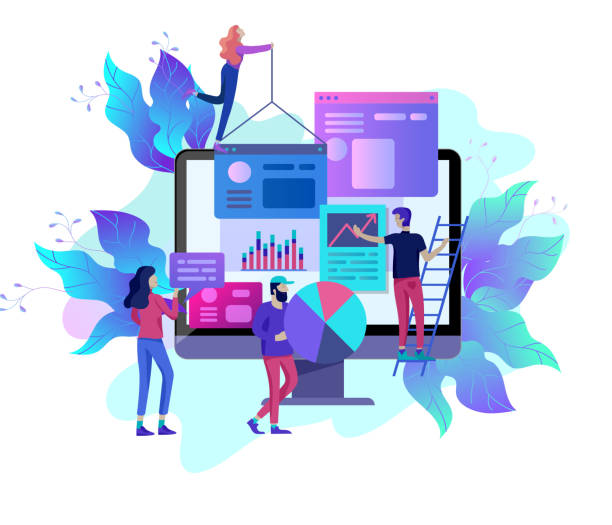
With the continuous advancement of technology and user expectations, the importance of fast website design in the future of web design will only increase.
Google is increasingly emphasizing #User Experience and #Core Web Vitals, of which loading speed is a key pillar.
This indicates that websites that load quickly will achieve better rankings in search results.
Furthermore, with the widespread use of Internet of Things (IoT) and various smart devices, the need for websites that perform quickly and optimally on any platform becomes more critical.
The emergence of technologies like #AMP (Accelerated Mobile Pages) and #PWA (Progressive Web Apps) also attests to the fact that the future of the web is moving towards an instant and seamless user experience.
AMP optimizes web pages for incredibly fast loading on mobile, while PWAs bring native app capabilities to websites, including offline functionality and quick access from the device’s home screen.
These trends indicate that optimally performing web design is no longer a luxury choice but an industry standard.
Those who do not embrace this change will gradually fall behind in the competition.
Therefore, for every business and developer, #continuous investment in fast website design techniques and keeping up with the latest developments is an absolute necessity for success in the future digital ecosystem.
Ultimately, fast website design is not just about optimized coding; it also signifies a deep understanding of user needs and the importance of their time.
Frequently Asked Questions
| Question | Answer |
|---|---|
| What is fast website design? | A process for building a website that loads quickly and provides a smooth and optimized user experience. |
| Why is website speed important? | Increases user satisfaction, improves search engine ranking (SEO), reduces bounce rate, and increases conversion rate. |
| What factors affect website speed? | Page size, number of HTTP requests, image optimization, JavaScript and CSS codes, server speed, and caching. |
| How can website speed be measured? | Using tools like Google PageSpeed Insights, GTmetrix, Pingdom Tools. |
| How can website speed be increased? | Optimizing images, compressing files (CSS, JS, HTML), browser caching, reducing redirects, choosing suitable hosting. |
| Does fast website design mean low quality? | No, fast design means focusing on optimizing speed and efficiency, not reducing the quality of design or content. |
| What is the role of hosting in website speed? | The speed and quality of the hosting server directly impact the site’s response time and thus the loading speed. |
| How can images be optimized for speed? | Using appropriate formats (e.g., WebP), compressing images without significant quality loss, specifying definite dimensions for images. |
| Can complex websites also be fast? | Yes, by using appropriate architecture, code optimization, and resource management, even complex sites can have high speed. |
| Is fast website design the same as Agile development? | No, fast website design focuses on the final outcome (a fast website), while Agile development is a methodology for project management and software development. |
And other services of Rasaweb Advertising Agency in the field of advertising
Smart SEO: A combination of creativity and technology for digital branding through user experience customization.
Smart Social Media: Professional optimization for digital branding using marketing automation.
Smart Brand Identity: An effective tool to increase click-through rates with the help of attractive user interface design.
Smart Custom Software: A professional solution for analyzing customer behavior focusing on SEO-driven content strategy.
Smart Marketplace: Designed for businesses seeking user engagement through precise audience targeting.
And over a hundred other services in the field of internet advertising, advertising consultation, and organizational solutions
Internet Advertising | Advertising Strategy | Advertorial
Resources
The Importance of Site Speed in SEO
Why is Fast Website Design Important for Your Business?
The Impact of Increasing Site Speed on User Experience and Sales
Website Performance Optimization for Increased Customer Satisfaction
? Are you ready to transform your business in the digital world? Rasaweb Afarin Digital Marketing Agency, with a specialized team and an innovative approach, offers comprehensive and effective solutions for your powerful online presence.
From website design with a modern user interface and professional SEO to intelligent social media management and targeted advertising campaigns, we provide everything you need to shine online. With Rasaweb Afarin, take a big step towards sustainable success.
📍 Tehran, Mirdamad Street, next to Bank Markazi, Kazeroun Jonoubi Alley, Ramin Alley, No. 6

